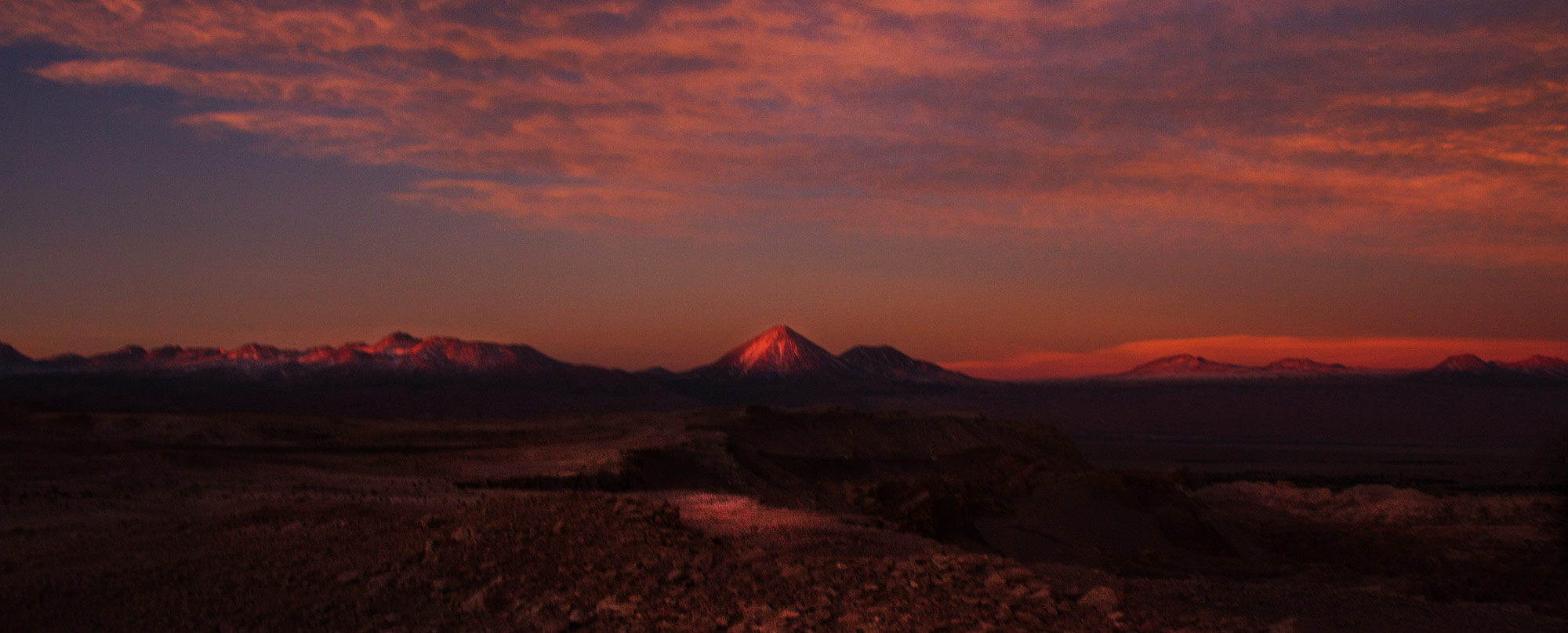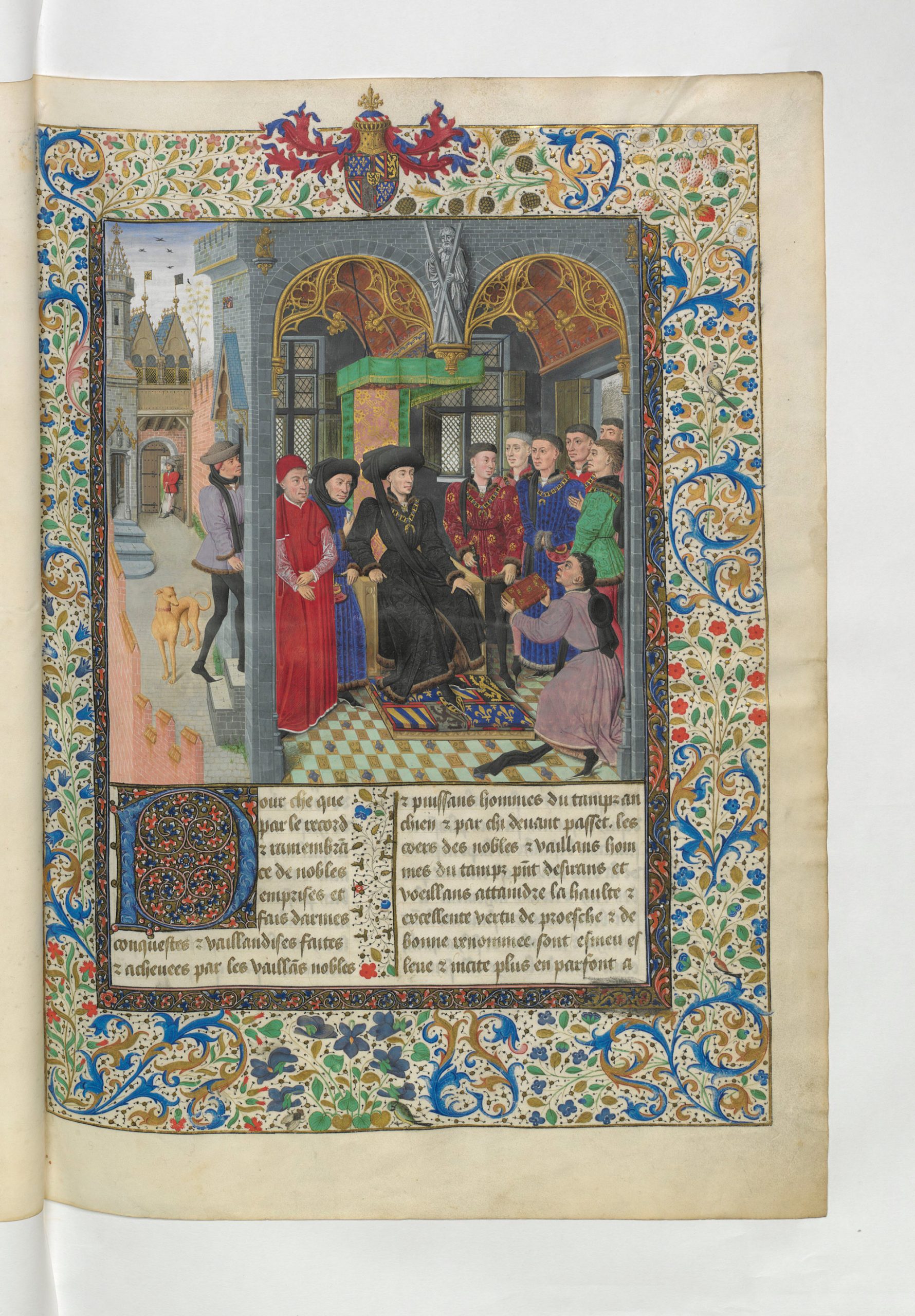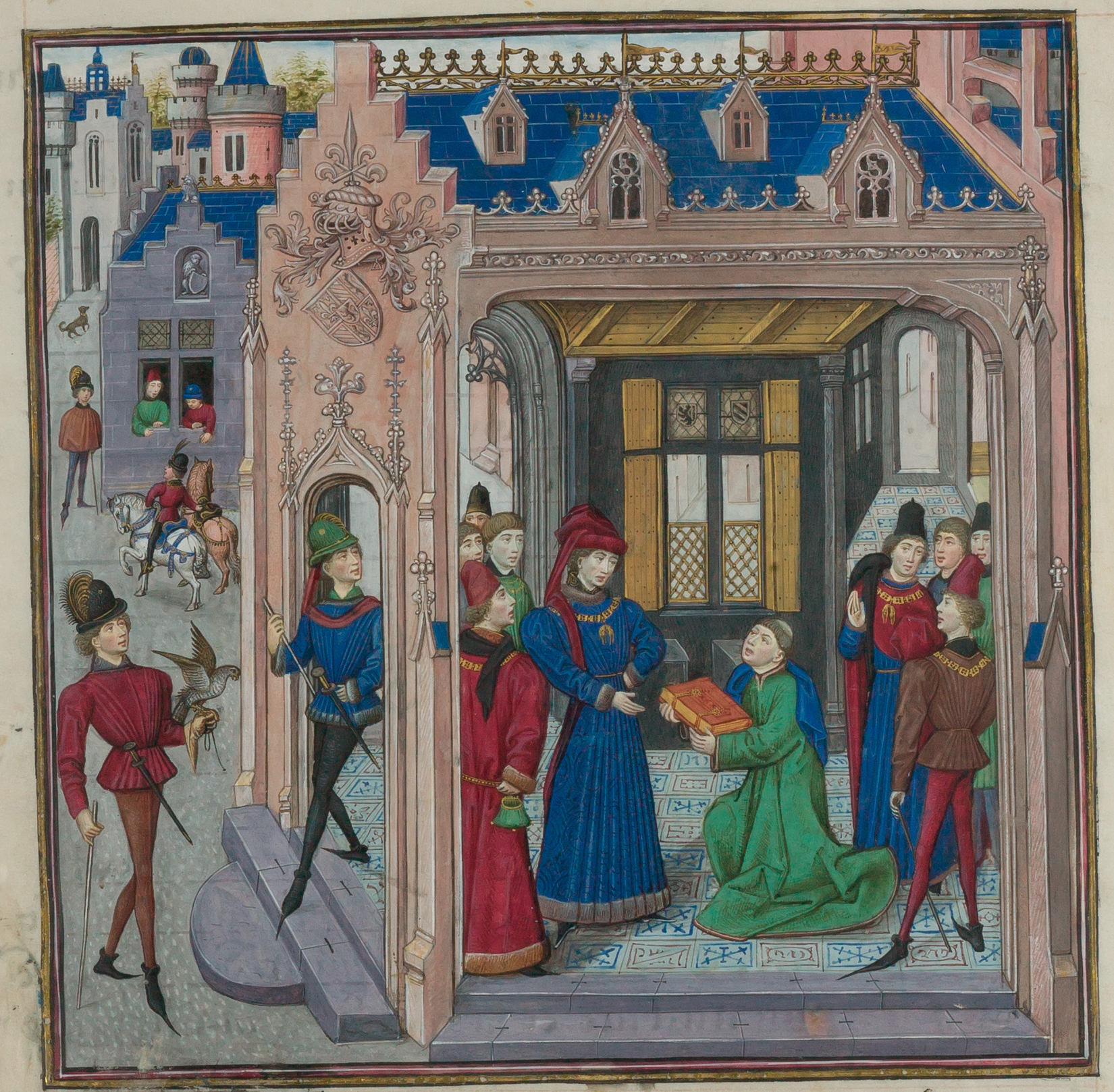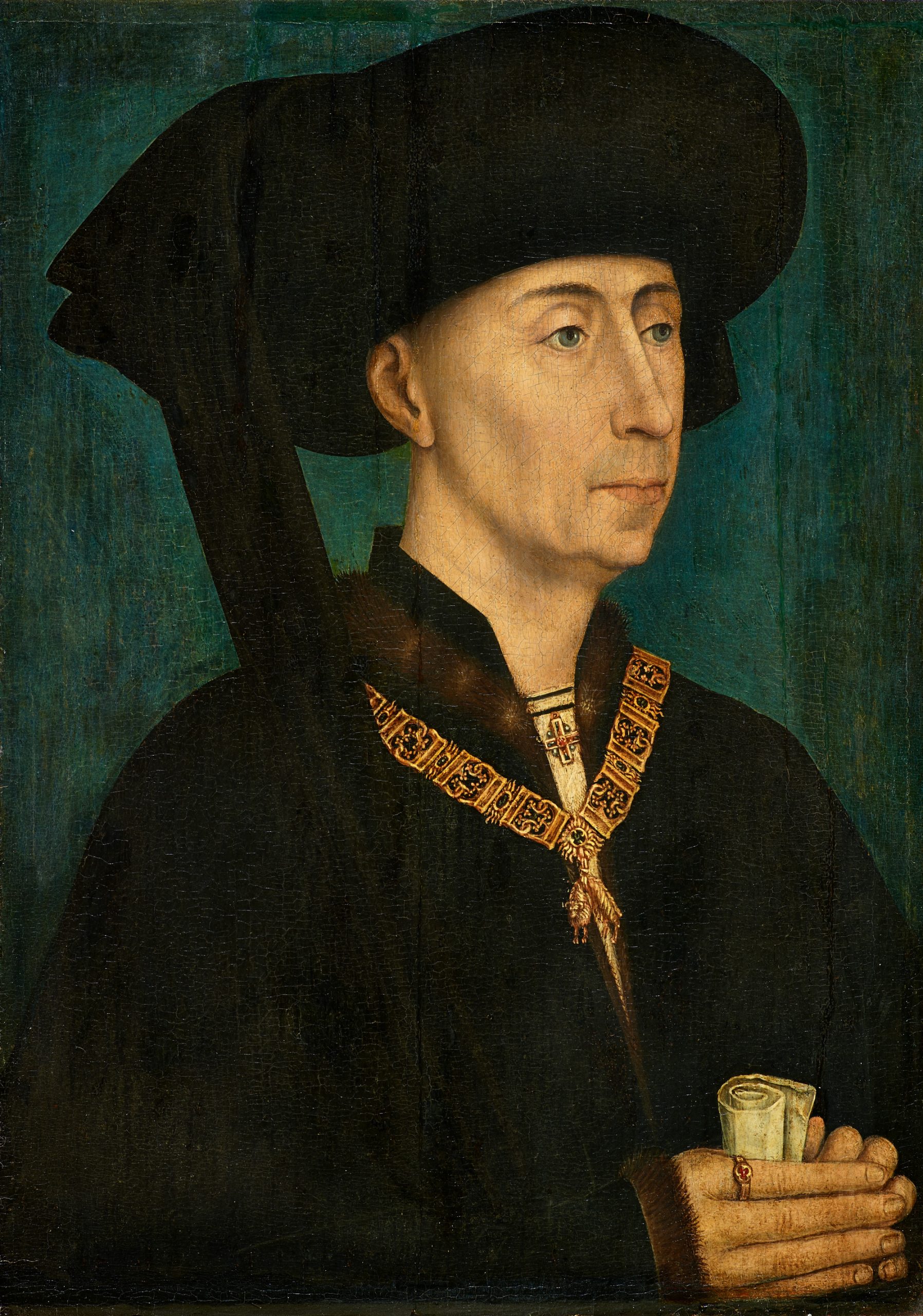I first came to the story of the women of Calama watching Patricio Guzmán’s 2010 documentary film Nostalgia de la Luz. Survivors of General Augusto Pinochet’s violent military dictatorship, the Women of Calama search the Atacama Desert for remains of their loved ones who were murdered or ‘disappeared’ during the regime. In one memorable scene, Vicky Saavedra holds, in her outstretched hand, pebble-sized fragments of what we learn are human bones she has found in the desert. She identifies the likely origin of each bone fragment, expertly detailing their porousness, their smoothness: “these fragments, which are flat, must be the splinters of a thighbone or the bone of an arm,” she says. [1] Vast desert surrounds her, revealing the limitless number of places where the fragmented remains of the disappeared may be scattered. Remains of Saavedra’s brother, José Saavedra Gonzalez, were found in a mass grave. “I remembered his tender expression,” Saavedra tells the viewer, “and this was all that remained. A few teeth and bits of bones. And a foot.” Sitting with his remains, she explains, was “a great joy and a great disappointment, because only then did I take in the fact that my brother was dead.” [2] José was eighteen years old when he was disappeared, a student in high school and member of the Revolutionary Students’ Front. [3]
Coming to the stories of the Women of Calama with little background knowledge of Chilean history or politics, and bearing witness to their trauma and endless search––mediated through film, language translation, and careful editing––was a powerful introduction to the importance of memory and the multiple labours that so often go unseen. For Violeta Berrios, there is “a big gap between knowing and accepting.” [4] Denied the respectful burial of the bodies and the memorialization of the lives of their loved ones disappeared by the Pinochet regime, [5] the Women of Calama grapple with complex feelings of loss as they search endlessly for the silenced truths about the disappeared men.
“As these women slowly die or are defeated by exhaustion, they may never really answer their one real question––where are the rest of the bodies of their loves?”
– Monica Martinez
I am interested in drawing connections between two different forms of labour that make visible Chile’s traumatic history of repressive political violence, dispossession, and disappearance. First, the laborious decades-long search for the remains of disappeared loved ones undertaken by the Women of Calama. And second, Chilean-Canadian artist Monica Mercedes Martinez’s sculptural installation everyone is fallen except for us fallen…. I am drawn to the Women of Calama for how their durational labours of making visible the loss of their loved ones inspired Martinez on her own personal and artistic journey of return to the Atacama Desert in order to make visible her own intergenerational loss.
When the Women of Calama began their search, they did so because they were unsatisfied with the lack of answers provided to them by the ruling junta and the Chilean state regarding the fate of their loved ones. [6] Unable to blindly accept the deaths of their loved ones and the dictatorship’s lies about their disappearances, the women began to search for the truths they had been denied. [7] Reasons not to seek answers were plentiful: physical discomfort––the sprawling expanse of the Atacama Desert is one of the driest climates on the planet, inhospitable to most vegetation; [8] political pressures––though at one point the women were forbidden to meet in order to discuss their search and activism, they refused to be silenced; [9] and, of course, the complex emotions that necessarily accompany the daily encounter with incomprehensible loss. Countering these reasons was their collective and relentless desire for truth and closure. Vicky Saavedra describes this feeling with regards to José, who was 18 years old when he was disappeared: “I have to see my brother in a coffin, in the cemetery, to even begin to assimilate his death.” [10] Violeta Berríos Águila describes a painful juxtaposition that she has internalized with regards to the loss of her partner, Mario Argüellez Toro: “I think of what it would be like to someday meet up with him again. I would say, ‘How are you? I am so happy you are alive. I still love you.’ Other days I know he is dead.” Mario was taken a month into the new regime. He was 34 years old. [11]
The searching, digging, and support that these women provided for one another can be understood as labours of care: labours that are not necessarily recognized as ‘work’ in a capitalist structure but which are nonetheless emotionally and, in the case of these women’s ongoing search, physically demanding. [12] Their labour of making the invisible visible––quite literally finding remnants of individuals’ remains––is also symbolic and political: the women’s search marks the ongoing desire for truth and justice, which has been stricken from the official record and, so too, from the public eye. [13]
The labour of making visible is also a central component of the visual art project undertaken by Monica Mercedes Martinez in the creation of ceramic forms that would later be placed in the desert by the artist collective CONSTELACIONES. Martinez describes the connection she felt with the Women of Calama, and the desire to make their loss visible: “As these women slowly die or are defeated by exhaustion, they may never really answer their one real question––where are the rest of the bodies of their loves? As I researched their stories and my sculpture evolved, I created twenty-six specific cross shapes for their twenty-six missing to add to the mound, a small tribute of remembrance.” [14]
Born in Chile but raised in Canada, Martinez describes a unique, sometimes tumultuous diasporic identity that does not fit comfortably in either nation. [15] Her family was among the hundreds of thousands who left Chile following Pinochet’s 1973 military coup, either to escape persecution or for economic reasons. [16] Though Martinez does not recall her early days in Chile, she recognizes the pain that her parents carry: “The few stories they did share hinted at a pain and bewilderment still so vivid decades later that I have always hesitated to probe too deeply, not wanting to add to the heavy burden of carrying those memories.” [17]
Martinez’s creation of hundreds of ceramic forms was a physically laborious task, but it was also an emotional labour. As Martinez immersed herself in research about the coup, she experienced grief and anger that she had previously been unaware of. [18] Despite these overwhelming emotions, she persisted, overcoming what her mother describes as “falling into the darkness.” [19] Martinez’s combined physical, emotional, and creative labours enabled her to make visible the grief she struggled to understand, without allowing it to consume her. The forms mark and represent the disappeared in a way that is both completely distinct from, and runs parallel to, the labour of making grief visible undertaken by the Women of Calama. [20]
The Women of Calama labour to give voice to those who were silenced by the Pinochet regime. Through their decades-long search for answers, their political activism, and their acts of memorialization, they reject the idea that their disappeared loved ones should be forgotten. By marking the mass grave where fragmented remains of the disappeared were found seventeen years into their search, [21] and by raising funds for a mausoleum to honour their deceased loved ones––they adamantly refuse to be complicit in the silence of the Chilean state. [22] For the Women of Calama, the labour of making visible the violent deaths of their loved ones is physical, emotional, and political. Their work draws attention to the questions of who is rendered visible in public memory and who must engage in emotional labour-as-activism in order to make sure that the stories of the disappeared become part of the public record.
One thing that has deeply affected me throughout this research is the continuing invisibility of the careful labours performed by the Women of Calama. Save for Paula Allen’s beautiful photographic journey with the Women and Guzmán’s documentary, information is difficult to find. The quiet activism of the Women of Calama, and of women doing the labour of activism throughout the Pinochet regime, has been all but stricken from public record. The Report of the National Commission of Truth and Reconciliation, importantly documents the executions of the 26 men in Calama in October 1973 [23] but the report does not describe the work of the Women of Calama and other activisms undertaken by women in Chile following the coup.
Martinez’s work makes visible these labours that are not officially recognized. For Martinez, her work acknowledges those disappeared and forgotten, [24] and through her creative labour, the disappeared are both honoured and their deaths made visible. In bringing Martinez’s forms to the Atacama Desert in 2016, CONSTELACIONES honoured all of these labours––recognizing and making visible work that might otherwise disappear from public memory.
Notes
[2] See Ibid.
[3] Paula Allen, Flowers in the Desert: The Search for Chile’s Disappeared [Flores en el desierto: la bâusqueda de los desaparecidos de Chile] (Gainesville: University Press of Florida, 2013).
[4] Allen, 90.
[5] See Allen.
[6] Isabel Allende, “Foreword,” in Allen, viii.
[7] Patricia Verdugo, “The Tragedy of Calama,” in Allen, xii.
[8] See Armesto, JJ, et al. “The Mediterranean Environment,” in The Physical Geography of South America, 184 – 199 (Oxford: Oxford University Press, 2007).
[9] Allen, 20.
[10] Ibid., 14; 138.
[11] Ibid., 12; 134.
[12] Kirstein Rummery and Michael Fine, “Care: A Critical Review of Theory, Policy and Practice,” Social Policy & Administration 46, no. 3 (2012): 323, doi: 10.1111/j.1467-9515.2012.00845.x.
[13] Allende, in Allen, viii.
[14] Monica Mercedes Martinez, As We See Ourselves, So Shall We be Seen: Identity and the Artist’s Practice, MFA Thesis (Winnipeg: University of Manitoba, 2012), 14, https://mspace.lib.umanitoba.ca/handle/1993/8471.
[15] Martinez, 3.
[16] Martinez 9; Thomas C Wright, “Legacy of Dictatorship: Works on the Chilean Diaspora,” Latin American Research Review, 30, no. 3 (1995): 198-9, jstor.org/stable/2503987.
[17] Martinez, 15-16.
[18] Ibid., 13.
[19] Ibid.
[20] Ibid., 10-11.
[21] Allen, 42.
[22] Allen, 64 – 66.
[23] National Commission for Truth and Reconciliation, “Report of the Chilean National
Commission for Truth and Reconciliation (English Translation),” United States Institute of
Peace, https://www.usip.org/publications/1990/05/truth-commission-chile-90, 173.
[24] Martinez, 10 – 11.
[1] Patricio Guzmán, dir., Nostalgia for the Light [Nostalgia de la Luz] (Icarus Films, 2011).
[2] (Guzmán
[3] Paula Allen, et al., Flowers in the Desert: The Search for Chile’s Disappeared [Flores en el desierto: la bâusqueda de los desaparecidos de Chile], 2nd ed. (Gainesville: University Press of Florida, 2013).
[4] Allen, 90.
[5] Allen.
[6] Isabel Allende, “Foreword,” in Allen, viii.
[7] Patricia Verdugo, “The Tragedy of Calama,” in Allen, xii.
[8] (Armesto et al. 184-5)
[9] Allen, 20.
[10] Allen 14; 138.
[11] Allen 12; 134.
[12] Kirstein Rummery and Michael Fine, “Care: A Critical Review of Theory, Policy and Practice,” Social Policy & Administration, 46, no. 3 (2012): 323, doi: 10.1111/j.1467-9515.2012.00845.x.
[13] Allende, viii.
[14] Monica Mercedes Martinez, As we See Ourselves, so Shall We be Seen: Identity and the Artist’s Practice, MFA Thesis (Winnepeg: University of Manitoba, 2012), https://mspace.lib.umanitoba.ca/handle/1993/8471, 14.
[15] Martinez, 3.
[16] Martinez 9; Thomas C Wright, “Legacy of Dictatorship: Works on the Chilean Diaspora,” Latin American Research Review, 30, no. 3 (1995): 198-9, jstor.org/stable/2503987.
[17] Martinez, 15-16.
[18] Martinez, 13.
[19] Martinez 13.
[20] Martinez 10-11.
[21] Allen, 42.
[22] Allen 64 – 66.
[23] National Commission for Truth and Reconciliation, “Report of the Chilean National
Commission for Truth and Reconciliation (English Translation),”United States Institute of
Peace, https://www.usip.org/publications/1990/05/truth-commission-chile-90, 173.
[24] Martinez, 10 – 11.



